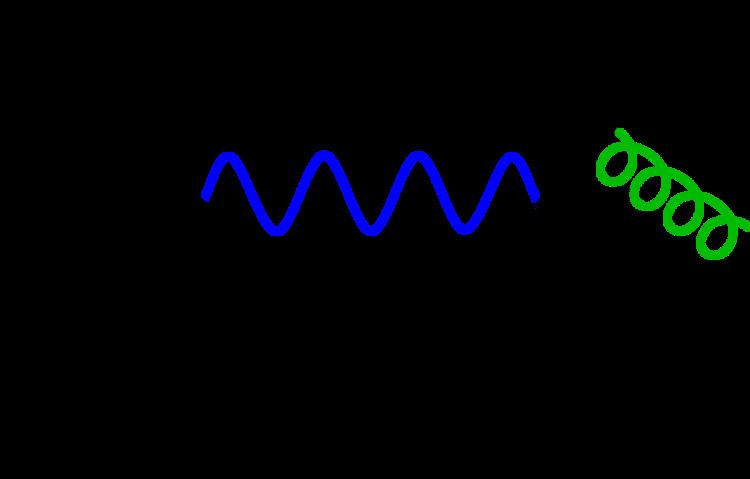 | ||
The Wheeler–DeWitt equation is a field equation. It is part of a theory that attempts to combine mathematically the ideas of quantum mechanics and general relativity, a step toward a theory of quantum gravity. In this approach, time plays no role in the equation, leading to the problem of time. More specifically, the equation describes the quantum version of the Hamiltonian constraint using metric variables. Its commutation relations with the diffeomorphism constraints generate the Bergmann-Komar "group" (which is the diffeomorphism group on-shell, but differs off-shell).
Contents
Quantum gravity
All defined and understood descriptions of string/M-theory deal with fixed asymptotic conditions on the background spacetime. At infinity, the "right" choice of the time coordinate "t" is determined (because the space-time is asymptotic to some fixed space-time) in every description, so there is a preferred definition of the Hamiltonian (with nonzero eigenvalues) to evolve states of the system forward in time. This avoids all the need to dynamically generate a time dimension using the Wheeler-de Witt equation. Thus, the equation has not played a role in string theory thus far.
There could exist a Wheeler-de Witt style manner to describe the bulk dynamics of quantum theory of gravity. Some experts believe that this equation still holds the potential for understanding quantum gravity; however, decades after the equation was published, completely different approaches, such as string theory, have brought physicists as clear results about quantum gravity.
Motivation and background
In canonical gravity, spacetime is foliated into spacelike submanifolds. The three-metric (i.e., metric on the hypersurface) is
In that equation the Roman indices run over the values 1, 2, 3 and the Greek indices run over the values 1, 2, 3, 4. The three-metric
where
Quantization "puts hats" on the momenta and field variables; that is, the functions of numbers in the classical case become operators that modify the state function in the quantum case. Thus we obtain the operator
Working in "position space", these operators are
One can apply the operator to a general wave functional of the metric
Which would give a set of constraints amongst the coefficients
Derivation from path integral
The Wheeler–DeWitt equation can be derived from a path integral using the gravitational action in the Euclidean quantum gravity paradigm:
where one integrates over a class of Riemannian four-metrics and matter fields matching certain boundary conditions. Because the concept of a universal time coordinate seems unphysical, and at odds with the principles of general relativity, the action is evaluated around a 3-metric which we take as the boundary of the classes of four-metrics and on which a certain configuration of matter fields exists. This latter might for example be the current configuration of matter in our universe as we observe it today. Evaluating the action so that it only depends on the 3-metric and the matter fields is sufficient to remove the need for a time coordinate as it effectively fixes a point in the evolution of the universe.
We obtain the Hamiltonian constraint from
where
where
Mathematical formalism
The Wheeler–DeWitt equation is a functional differential equation. It is ill defined in the general case, but very important in theoretical physics, especially in quantum gravity. It is a functional differential equation on the space of three dimensional spatial metrics. The Wheeler–DeWitt equation has the form of an operator acting on a wave functional, the functional reduces to a function in cosmology. Contrary to the general case, the Wheeler–DeWitt equation is well defined in minisuperspaces like the configuration space of cosmological theories. An example of such a wave function is the Hartle–Hawking state. Bryce DeWitt first published this equation in 1967 under the name "Einstein–Schrödinger equation"; it was later renamed the "Wheeler–DeWitt equation".
Hamiltonian constraint
Simply speaking, the Wheeler–DeWitt equation says
where
Although the symbols
Momentum constraint
We also need to augment the Hamiltonian constraint with momentum constraints
associated with spatial diffeomorphism invariance.
In minisuperspace approximations, we only have one Hamiltonian constraint (instead of infinitely many of them).
In fact, the principle of general covariance in general relativity implies that global evolution per se does not exist; the time
In general, the Hamiltonian vanishes for a theory with general covariance or time-scaling invariance.
